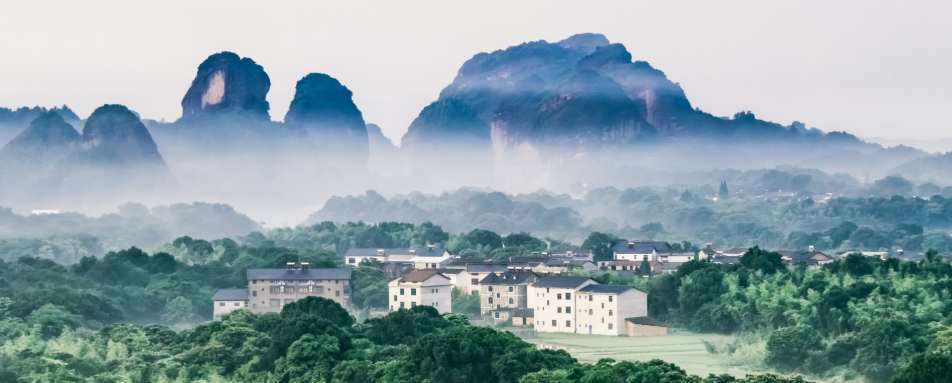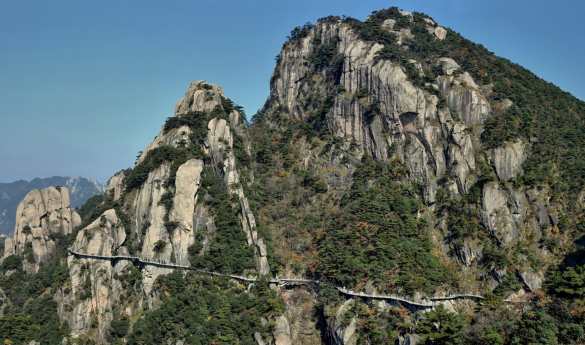Anhui & Jiangxi Mountains
Heading further inland from Eastern China, the water town landscape gradually transforms into picturesque mountains of Anhui and Jiangxi provinces, such as Mount Jiuhua, Mount Sanqing, Mount Longhu and Mount Lu.

Dedicated to Ksitigarbha Bodhissatva, Mount Jiuhua is one of the Four Sacred Buddhist Mountains in China. Best visited between March and November, it has been dubbed as the "Buddhist Heaven for Lotus Flowers". Legend has it that the legendary poet Li Bai wrote his famous poem "Magic is divided into two branches, sacred mountain generates nine glories" refers to this mountain with its 99 peaks which shapes like a blossoming lotus flower.
Literally translating to "Three Pure Ones", Mount Sanqing comprises of three main summits: Yujing, Yushui and Yuhua to represent the Taoist trinity. Registered as a UNESCO World Heritage Site in 2008, this geopark is the first UNESCO site of Jiangxi province and it is best accessed from the town of Shangrao.
Famous as the birthplace of Taoism, Mount Longhu is listed in the UNESCO World Heritage Site in 2010. Other than its sacred Shangqing Temple and Mansion of the Taoist Master, Mount Longhu also serves as a historical burial site for the Guyue people, who is known for the hanging coffins lodged on the cliff of the mountains. It is one of the Four Sacred Mountains of Taoism in China and is best accessed from the town of Yingtan.
A UNESCO World Heritage Site since 1996, Mount Lu served as a summer resort for Western missionaries such as Absalom Sydenstricker, the father of Pearl Buck. It is also one of the spiritual centres of Chinese civilization, with traces of Buddhist and Taoist temples, as well as Confucius landmarks blending into the extraordinary natural landscapes. Mount Lu is best accessed from the city of Nanchang.



